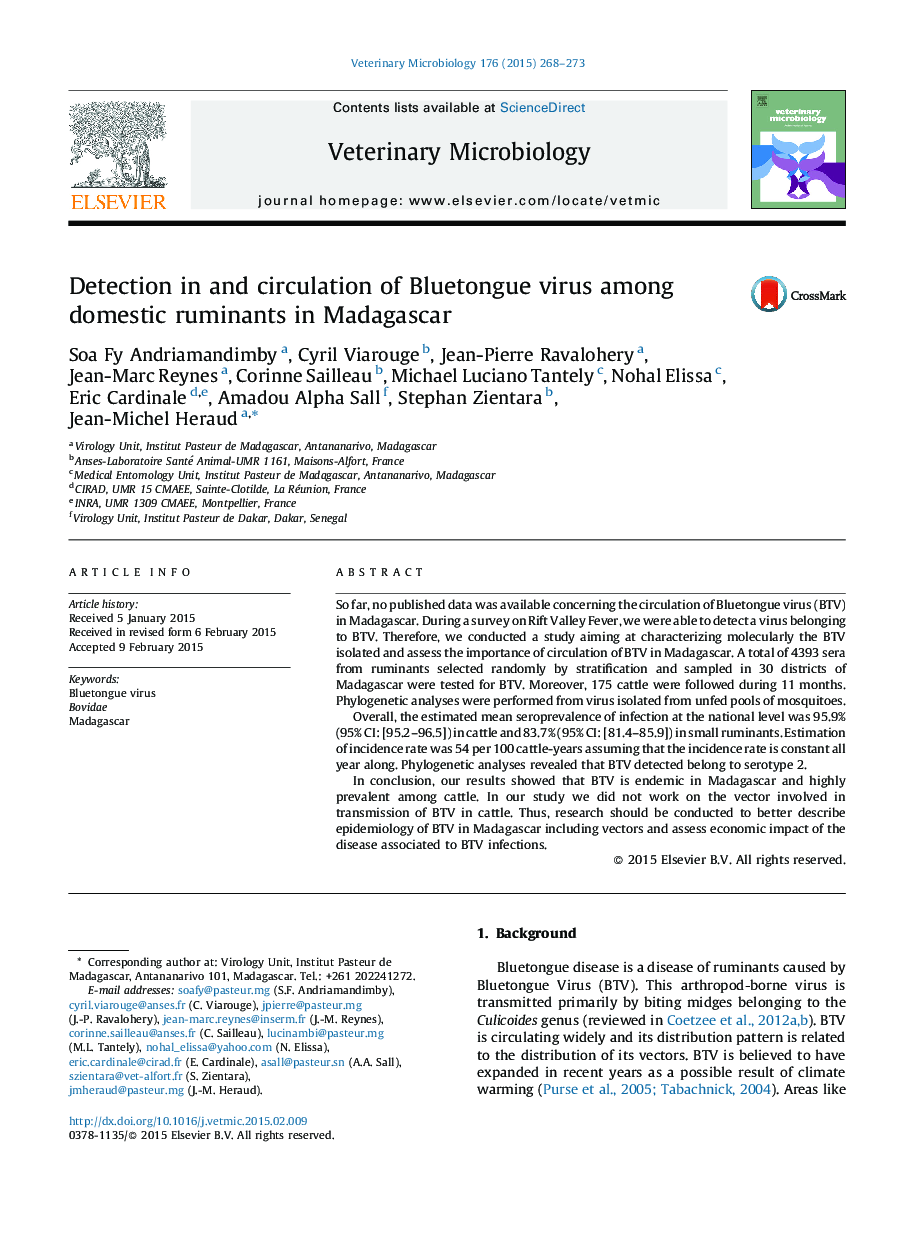| Article ID | Journal | Published Year | Pages | File Type |
|---|---|---|---|---|
| 5799992 | Veterinary Microbiology | 2015 | 6 Pages |
â¢We assessed the circulation of BTV in cattle from Madagascar.â¢Bluetongue virus serotype 2 (BTV-2) circulate in Madagascar.â¢BTV is endemic and highly prevalent among cattle.â¢Yearly incidence among cattle suggest low pathogenicity of circulating strains.
So far, no published data was available concerning the circulation of Bluetongue virus (BTV) in Madagascar. During a survey on Rift Valley Fever, we were able to detect a virus belonging to BTV. Therefore, we conducted a study aiming at characterizing molecularly the BTV isolated and assess the importance of circulation of BTV in Madagascar. A total of 4393 sera from ruminants selected randomly by stratification and sampled in 30 districts of Madagascar were tested for BTV. Moreover, 175 cattle were followed during 11 months. Phylogenetic analyses were performed from virus isolated from unfed pools of mosquitoes.Overall, the estimated mean seroprevalence of infection at the national level was 95.9% (95% CI: [95.2-96.5]) in cattle and 83.7% (95% CI: [81.4-85.9]) in small ruminants. Estimation of incidence rate was 54 per 100 cattle-years assuming that the incidence rate is constant all year along. Phylogenetic analyses revealed that BTV detected belong to serotype 2.In conclusion, our results showed that BTV is endemic in Madagascar and highly prevalent among cattle. In our study we did not work on the vector involved in transmission of BTV in cattle. Thus, research should be conducted to better describe epidemiology of BTV in Madagascar including vectors and assess economic impact of the disease associated to BTV infections.
